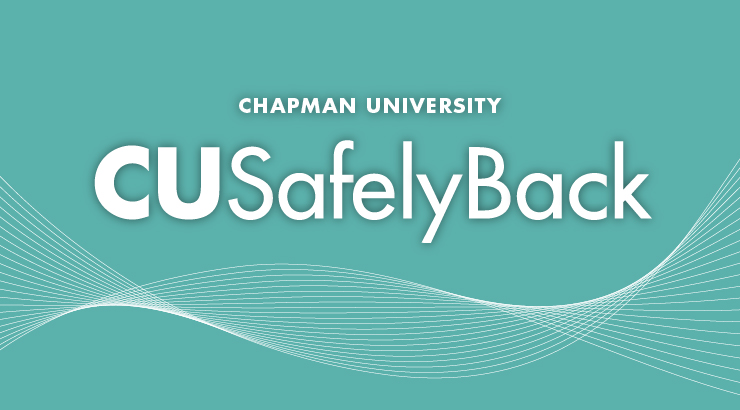
Behind the New CU Safely Signage
October 5, 2020
On Monday, October 5, 2020, some students, faculty, and staff will be allowed on the Chapman campus for the first time in over six months. However, there will be guidelines and rules to follow, all communicated by new signage on campus.
Wilkinson College Professor Claudine Jaenichen (Department of Art), who studies how people process information under various levels of stress and anxiety, helped develop the campus’s new look. “The CU Safely Back signage has to assertively redefine a routine that Chapman’s community is so familiar with. It is similar to the orange cones placed on the road when a detour is implemented,” Jaenichen explains.
Why teal colored Panther Paws giving directions to the Chapman community?
“With more urgent and assertive messaging, the design campaign must stand out from its environment. That’s why teal was used as the primary color for COVID messaging. Compared to the applications of Chapman’s red and black, teal creates a hierarchical leap from all the other messaging and branding on campus,” said Jaenichen.
Professor Jaenichen serves on the Executive Board of Directors for the Design Network for Emergency Management (DNEM), an international think tank that consists of experts from New Zealand, Europe, South America, Asia, and the United States, making her a perfect fit for the CU Safely Back Communication and Signage Task Force.
Unknowingly, we walk around with a certain amount of “path knowledge,” she explains. “Path knowledge includes the knowledge and rules we have to obtain to move around—how we are expected to stand in line, enter restrooms and classrooms, move through corridors, and how we sit at tables,” said Jaenichen. “The challenge is getting people to forget old routines and learn new ones. This is no easy task. Human behavior is rooted in routine.”
During a pandemic, people can find it difficult to process information under various levels of stress and anxiety. According to Jaenichen, if communication isn’t clear, consistent, assertive, and enforceable, people will make decisions under stress vulnerable to cognitive phenomena.
“People under stress are vulnerable to cognitive phenomena, including tunnel vision, temporary cognitive paralysis, and crowd psychology. Processing information and making-decisions come from a cognitive framework that is developed from previous experiences and knowledge. Because a pandemic is a new experience for everyone, and the level of stress and anxiety is wide-spread, there has been a diverse range of responses (e.g. to wear or not wear a mask). With crowd psychology, we look to those around us and adapt to the majority, even if it is the wrong decision.”
When heading back to campus, make that extra effort to understand the campus return guidelines, read the new signage, and point it out to others. If we follow these simple guidelines and abide by the new implemented rules, we can protect the health of everyone on campus and in our community.
Get the latest information on CU Safely Back.
CU Safely Back Graphics: Full design credit goes to Jeff Brouwer and his design team at SMC.





